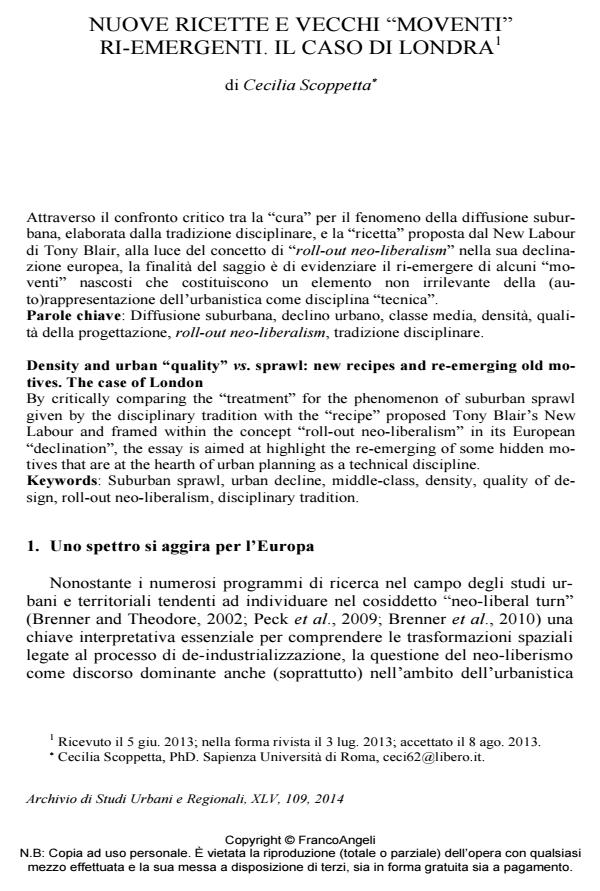Nuove ricette e vecchi "moventi" ri-emergenti. il caso di londra
Titolo Rivista ARCHIVIO DI STUDI URBANI E REGIONALI
Autori/Curatori Cecilia Scoppetta
Anno di pubblicazione 2014 Fascicolo 2014/109
Lingua Italiano Numero pagine 22 P. 74-95 Dimensione file 118 KB
DOI 10.3280/ASUR2014-109005
Il DOI è il codice a barre della proprietà intellettuale: per saperne di più
clicca qui
Qui sotto puoi vedere in anteprima la prima pagina di questo articolo.
Se questo articolo ti interessa, lo puoi acquistare (e scaricare in formato pdf) seguendo le facili indicazioni per acquistare il download credit. Acquista Download Credits per scaricare questo Articolo in formato PDF

FrancoAngeli è membro della Publishers International Linking Association, Inc (PILA)associazione indipendente e non profit per facilitare (attraverso i servizi tecnologici implementati da CrossRef.org) l’accesso degli studiosi ai contenuti digitali nelle pubblicazioni professionali e scientifiche
Attraverso il confronto critico tra la "cura" per il fenomeno della diffusione suburbana, elaborata dalla tradizione disciplinare, e la "ricetta" proposta dal New Labour di Tony Blair, alla luce del concetto di "roll-out neo-liberalism" nella sua declinazione europea, la finalità del saggio è di evidenziare il ri-emergere di alcuni "moventi" nascosti che costituiscono un elemento non irrilevante della (auto) rappresentazione dell’urbanistica come disciplina "tecnica".
Parole chiave:Diffusione suburbana, declino urbano, classe media, densità, qualità della progettazione, roll-out neo-liberalism, tradizione disciplinare.
Cecilia Scoppetta, Nuove ricette e vecchi "moventi" ri-emergenti. il caso di londra in "ARCHIVIO DI STUDI URBANI E REGIONALI" 109/2014, pp 74-95, DOI: 10.3280/ASUR2014-109005